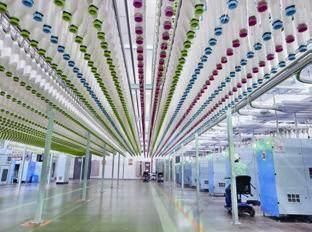Intelligent Alterations
2021-06-04ByLiXiaoyu
By Li Xiaoyu

Chinas entry into the World Trade Organization in 2001 and the abolition of restrictions under the Agreement on Textiles and Clothing in 2005 marked the end of an era for the apparel industry across developed economies. Manufacturers in those countries ceased almost all production activity in favor of low-cost sourcing from emerging countries, including China. By 2020, China had become the worlds largest producer and exporter of textiles and apparel, with an export value of nearly $291 billion.
Nevertheless, with the onset of accelerated population aging, the demographic dividend China had previously enjoyed, referring to the rapidly growing young population, is beginning to decline. Moreover, as a result of rising labor costs, the country is losing its former comparative advantage.
Facing stiff competition, Chinese manufacturers are not sitting back. They are betting on innovation to revolutionize this sector. Subsequently, the garment manufacturing industry today has entered a new stage of development, one that aims to be intelligent, flexible and green.
Automated production
Anhui Huamao Group in Anqing, Anhui Province, principally engages in dyeing, processing, manufacturing and distributing textile products. Inside its huge spinning mill, automated machines are running at full speed and robots are transporting semi-finished products; there is hardly any human labor left, except for a few workers who supervise the production process on their electric scooters. A screen displays real-time information about quality, equipment operation and energy consumption.
“In the past, our factory was crowded. With deafening noise and absorbent cotton swirling everywhere and all the time, the air was stuffy,”recalled General Manager Zhan Lingzhi, who has been engaged in the textile business for some 30 years. “Today, working conditions have improved a lot. Our employees enjoy a clean and comfortable environment.”
The mills intelligent monitoring platform enables online quality control and traceability of textiles. The automation of the production lines has reduced the number of workers needed to manufacture 10,000 spindles from 50 to 13. Productivity has increased by 30 to 50 percent. The modernization also saves up to 20 kWh of electricity consumption for the production of one ton of cotton yarn, leading to a reduction in the electricity bill of 600,000 yuan($93,000) per year.
This transformation would be unimaginable without the companys years of research and development to address labor cost pressures.
